This feature is brought to you in association with Masters of CG, a contest to redefine one of 2000AD's most iconic characters. Find out more at the end of this article...
Currently storming cinemas around the world, Dawn of the Planet of the Apes promises to be one of the biggest commercial and critical successes of the year. A sequel to 2011's Rise of the Planet of the Apes reboot, it tells the story of the early stages of a clash for survival between humans and apes after an apocalyptic virus has devastated the world's population.
When it comes to its visual effects, most of the media's attention has been focused on the performance capture work of Andy Serkis' Imaginarium Studios – and you can read our interview with them here. But another significant trend it points to is the increasing importance of previz (aka previzualization) to the industry.
Here we chat to Duane Floch of MPC, who worked on both the 2011 and 2014 movies, about this under-reported but vital cog in the modern film-making machine...
The (pre)vision thing
So what is previz? In a nutshell, it's the process of visualizing a project right at the start.
In the old days, directors used storyboards, concept artwork and physical models. Nowadays, modern previz teams use computer animation to create rough cuts of scenes for them to work from when carrying out principal photography.
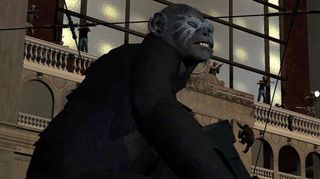
At a time when hundreds of millions of dollars are being spent on movies, it's becoming more and more vital in saving countless hours on set and reducing costs in post.
With a reported production budget of $93million, and heavy use of CG throughout, 2011's Rise of the Planet of Apes was a huge challenge, recalls overall previz supervisor, MPC's Duane Floch.
"What they were proposing to do in visual effects had never been done on that scale," he says. "It was exciting to get involved."
Front and centre
While on some films, previz is marginalised, on Rise it was front and centre, he adds. "The edict from the studio was to previz any shot that had an ape in it," he says. "That was a huge undertaking, involving six different companies and about 65 artists working on the previz sequences."
You can see some of the previz work for the first film in the series below:
With the 2014 sequel, though, things were a little different. "The biggest difference between the two films, aside from shooting style, was the sheer number of shots featuring only apes – from full-scale battle scenes to small, intimate moments, and everything in between, says Floch. "So [the producers] were comfortable with being more selective in terms of which sequences really required previz."
That didn't mean less work for MPC, though – quite the reverse, with more than 850 previz shots in total.
To wade through this enormous workload, Floch and MPC Film's executive producer Julian Levi assembled two teams; one working out of MPC's Santa Monica facility and the other embedded within the production team on location in New Orleans.
Cohesive look
Geographically separated, the teams had nonetheless to work together closely to maintain a cohesive look and feel to the work, with regular meetings with director Matt Reeves in all three locations proving critical.
Assets – including environments, props, characters and animation cycles – were regularly updated and shared from either location and daily phone calls, and cineSync sessions between locations were a regular occurence.
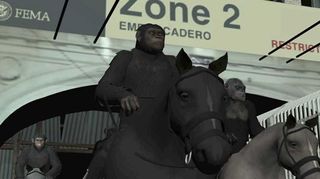
A tough challenge, then, but it was a rewarding one too, says Floch. "To continue working on the franchise in Dawn was a rare and welcome opportunity in previz," he smiles. "Kurt Williams (VFX producer/co-producer on Rise) and Ryan Stafford (VFX producer on Dawn) are really good friends and any opportunity I get to work with them I try to avail myself."
Ambitious undertaking
MPC's most ambitious sequences on the film were the 'Colony Attack' (involving 150 previz shots; 30 postviz shots and approximately 500 apes), 'Entering the Dam' (30 previz/techvis shots), and 'Village Chaos' (80 previz shots; 35 postviz shots and nearly 300 apes) sequences. Each was shot on location and required detailed, reality-based pre-vis animations.
Duane Floch was on set in Santa Monica. "We had it easy," he smiles, "staying warm and dry, and using Google Maps to acquire the topographic information we needed for the sequences shot there." It wasn't quite so much fun for the British Columbia crew, though. "The remote location up there presented a good deal of logistical challenges, rain being one of the more significant ones," he sympathises.
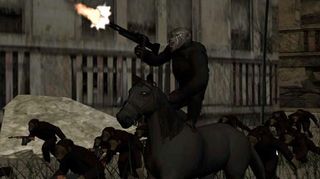
A more general problem was finding a way to integrate two separate geographical locations.
"Finding the transitions back and forth between San Francisco and New Orleans was a challenge," Floch says. "For example the Human Colony and the blocks immediately surrounding it was a New Orleans location. But everything involving the approach to the Colony was based in San Francisco.
"So we added in trolley wires, surrounding city blocks, abandoned, dilapidated trolley cars and the iconic California Street to seemlessly complete the illusion."
From pre to post
By mid-summer 2013, MPC transitioned from previz into postviz (which is similar to previz but takes place after principal photography rather than before).
As the plates came in and the turnover and screening schedule became more aggressive, more artists were added and embedded with editorial on the Fox lot, following a strategy used on the 2011 movie.
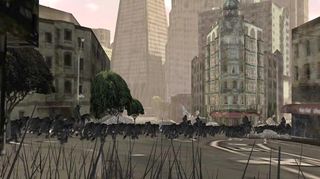
An additional advantage this time round was the availability of MPC's Bangalore facility for roto and match-move.
This allowed the postviz team at Fox to focus solely on story, animation and compositing. The quick turnaround of notes and access to the director and the editorial staff made for a high-paced work-flow on over 450 shots.
While none of these sequences will ever get seen by more than a few people, the level of detail in these stills shows just how important they are in shaping the action in a modern blockbuster. So next time you're enjoying a movie at your local multiplex, don't forget to raise your popcorn to the unsung heroes of previz.
Masters of CG
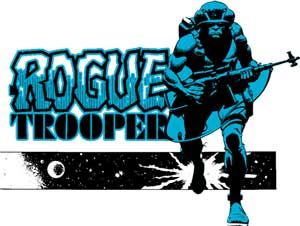
Masters of CG is a competition for creative professionals organised in association with HP and Rebellion, working with one of 2000AD's most iconic characters: Rogue Trooper. For full details of the contest, head to the Masters of CG website now.

Thank you for reading 5 articles this month* Join now for unlimited access
Enjoy your first month for just £1 / $1 / €1
*Read 5 free articles per month without a subscription

Join now for unlimited access
Try first month for just £1 / $1 / €1
Get the Creative Bloq Newsletter
Daily design news, reviews, how-tos and more, as picked by the editors.
Tom May is an award-winning journalist and editor specialising in design, photography and technology. Author of the Amazon #1 bestseller Great TED Talks: Creativity, published by Pavilion Books, Tom was previously editor of Professional Photography magazine, associate editor at Creative Bloq, and deputy editor at net magazine. Today, he is a regular contributor to Creative Bloq and its sister sites Digital Camera World, T3.com and Tech Radar. He also writes for Creative Boom and works on content marketing projects.
